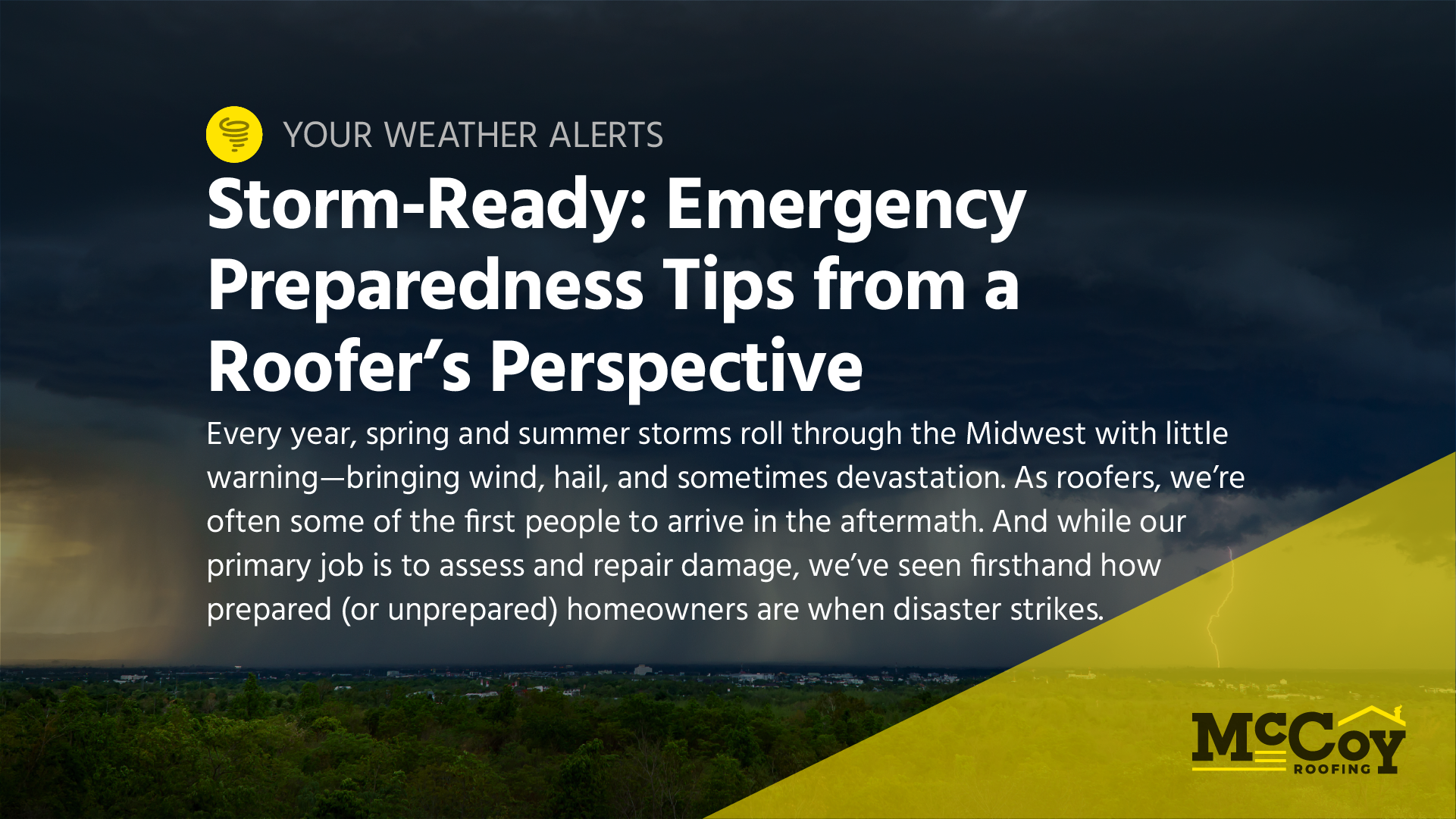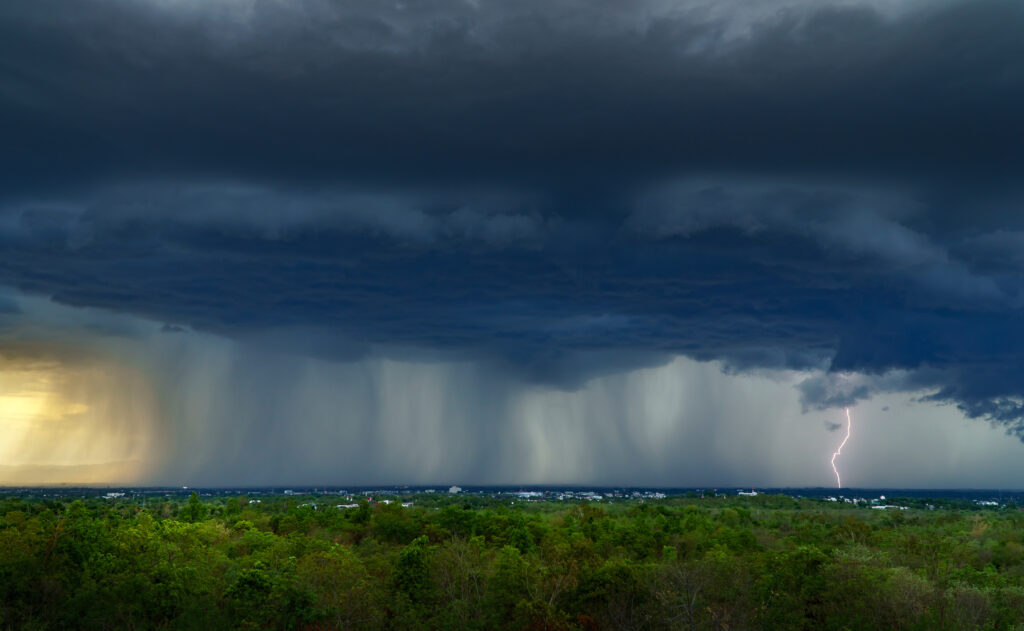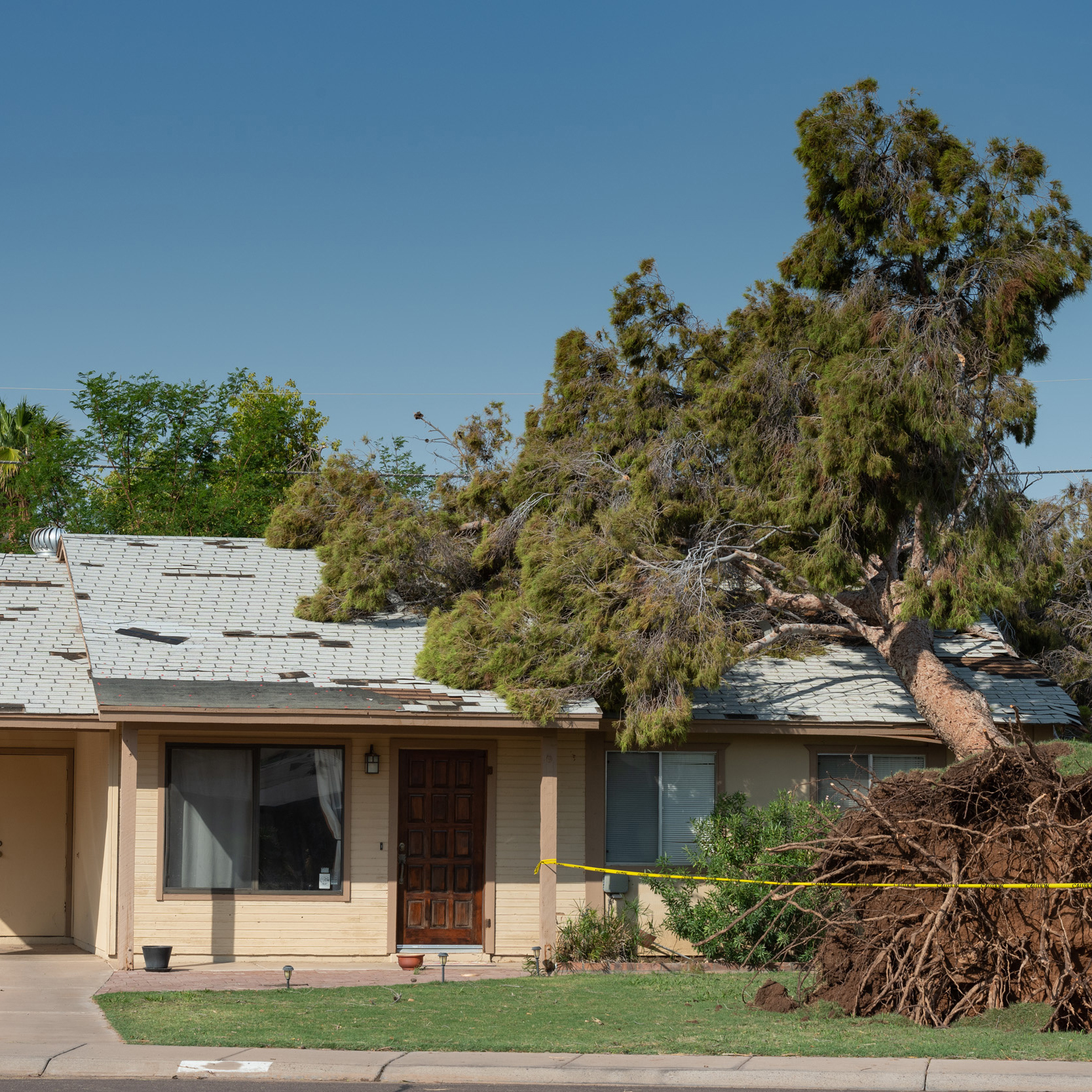

Storm-Ready: Emergency Preparedness Tips from a Roofer’s Perspective
Every year, spring and summer storms roll through the Midwest with little warning—bringing wind, hail, and sometimes devastation. As roofers, we’re often some of the first people to arrive in the aftermath. And while our primary job is to assess and repair damage, we’ve seen firsthand how prepared (or unprepared) homeowners are when disaster strikes.

5 Emergency Storm Preparedness Tips Every Homeowner Should Know
“Unfortunately, part of our job is heading into some of the most heavily damaged areas,” says Zach Varadi, Sales Manager at McCoy Roofing. “I’ve stood on a roof that was still intact while the house next door was completely leveled.”
Here are a few things we believe every homeowner should know—and do—to be ready when the next big storm hits.
1. Have a Plan Before the Sirens Sound
Preparedness doesn’t begin when the storm hits—it begins days or even weeks ahead. Know how you’ll receive alerts (especially if the power goes out), where you’ll go, and how to get in touch with loved ones.
- Get a NOAA weather radio with backup batteries in case cell towers or Wi-Fi go down.
- Designate a shelter location in your home. A basement or interior room without windows is best.
- Keep your phone charged before severe weather is forecast to hit your area.
- Talk to your family—especially kids—about what to do and where to go during different types of weather warnings.
“If you don’t know the storm is coming, and you don’t know what to do when it does, it’s already too late,” says Zach.
2. Avoid Glass Windows and Doors
During high winds and hailstorms, flying glass from broken windows can cause serious injuries—far more than most people realize.
“We’ve seen homes with every window on one side blown out,” says Zach. “It’s not always the roof that gets the worst of it—it’s mainly the glass.”
Protective window coverings or temporary storm shutters can make a difference. At the very least, draw curtains or blinds if severe weather is headed your way to help contain shattering glass.
Also, store patio furniture, flower pots, or anything else that could become a projectile during strong winds.
3. Take Shelter Underground or in the Safest Room
If your home has a basement or underground shelter, make sure it’s stocked and accessible. Don’t wait until the sirens sound to clear a path through the laundry room or garage. If you don’t have a basement, choose an interior closet, hallway, or bathroom without windows.
And remember—roofs can be rebuilt, but lives cannot.
“Hail can be big enough to go through a roof,” Zach says. “I’ve never seen it myself, but we’ve seen photos from jobs where it’s happened. Getting underground can absolutely save your life.”
4. Document What You Own—Before the Storm
When storm damage happens, one of the most stressful parts for homeowners is trying to remember what they’ve lost. That’s why it’s smart to take photos or videos of your home and belongings before disaster strikes.
Do a quick walk-through of your house, record everything in each room, and store the video somewhere safe—like cloud storage or an email to yourself. It can make the insurance process much smoother if you ever need to file a claim.
5. Know Who to Call After the Storm
In the chaos following a storm, you’ll likely hear from a dozen contractors—but knowing who to trust before the damage happens will save you time, money, and frustration.
At McCoy Roofing, we’ve helped families recover from nearly every type of storm damage. We’re local, certified, and have been around for nearly 20 years. If you need a roof inspection, we’ll be there—whether the damage happened yesterday or years ago.
Final Thought: Be Storm-Ready, Not Storm-Scared
You can’t control the weather, but you can take control of your preparedness. A little planning goes a long way when the skies turn dark. Need peace of mind heading into storm season?
Schedule a free roof inspection with McCoy Roofing today. We’ll make sure your roof is ready—and help you plan for what comes next.